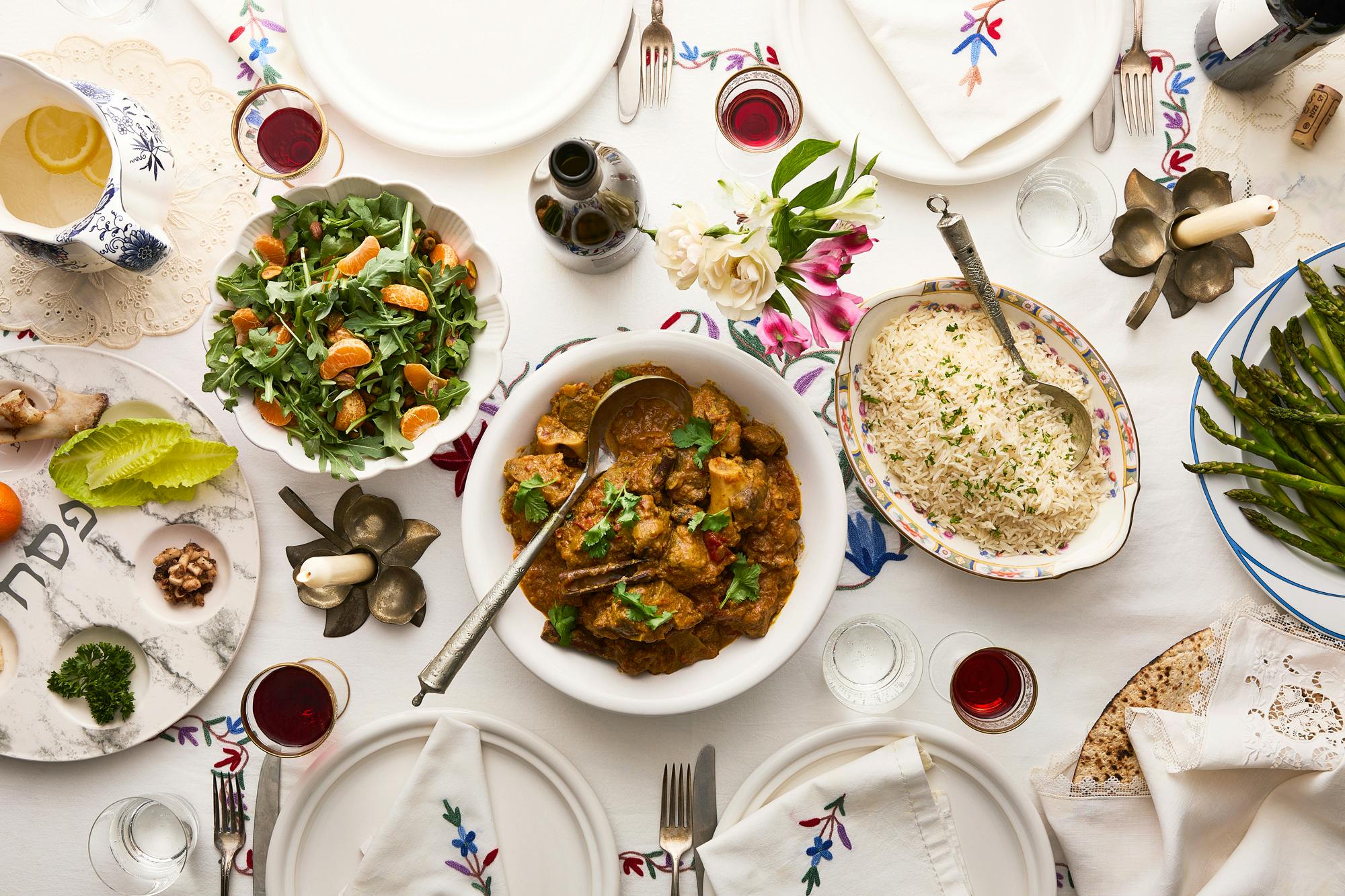Shared by Maryam and Muzaffar Chishti and Helene Lauffer
How a Lamb Dish from the Himalayas Became Part of New York Seder Tradition
How a Lamb Dish from the Himalayas Became Part of New York Seder Tradition
Family Journey
The night before Passover Seder, after everyone else has gone to sleep, Muzaffar Chishti heads to the kitchen in his apartment on Manhattan’s Upper West Side. He toasts cumin seeds, cloves, cardamom, cinnamon, and chiles and simmers lamb in a rich and heady sauce. By the time he’s wrapped up in the small hours, he’s made a rich Kashmiri lamb korma, a dish that’s been the center of his family’s Passover Seder for nearly 25 years.
The rest of the evening’s menu leans into Ashkenazi tradition with matzah ball soup made by his wife Helene Lauffer and her sister, gefilte fish the family picks up nearby at Murray's Sturgeon Shop, and a green vegetable or two to represent spring. Their Seder table is decorated with textiles from trips to India and plates from Helene’s father, a Jewish emigree from Germany who worked as an importer of china. Their dozen or so guests are a mix of Helene’s family, Muzaffar’s Indian friends, and guests who have never attended a Seder. And the evening is peppered with Passover songs sung to Broadway show tunes.
This is the Seder tradition their daughter Maryam Chishti was raised on, which beautifully captures her dual Indian Muslim and Ashkenazi Jewish heritage. Her identity, “felt like this 50/50 coin when I was younger, because I felt like a Jewish person on the Upper West Side, but then when we would go to India and that was a really immersive Indian experience,” she says.
“It wasn't until I was going through my Bat Mitzvah process that I really started to grapple with the duality of it all,” Maryam adds. Around the same time, Maryam also participated in a Muslim ceremony called the Affirmation of Shahada. Like most teenagers, she admits jokingly that at the start, the amount of work required for both rituals was “super annoying.”
To prepare for her Bat Mitzvah, she wrote a family history, values, and belief paper. She was struck by the similarities in the two religions and as she spoke with relatives from both sides of her family, she found shared values including a pillar of service and a commitment to giving back. But, as Maryam spoke with people outside of her family about her background, she was met with “an eyebrow raise or a lean back,” she says. “That was the first time I kind of clocked that dynamic.”
Inspired by her love of theater, at her Bat Mitzvah she delivered a monologue about her identity, family, and relationship to God, leaving many in the room teary eyed. “I think it was really emotional for folks, for me to declare that I was Muslim and Jewish,” she explains. Nearly 20 years later, she says the dual coming of age experiences helped inform who she is as an adult.
In 2022, Maryam co-founded The Lunar Collective, an organization by and for Asian American Jews. Through Lunar, she has connected with other Asian Jews and seen her experiences mirrored in members of the group. Asking about Passover traditions and the food in each other’s homes functions as an ice breaker in the group.
More recently, Maryam started to see her dual identity and heritage in a new light — as a reflection of her parents’ love for one another. “I came to be because they loved each other, because they wanted a family together. That’s been so beautiful for me to think about,” she says. “I'm so proud to be a product of them and their choice to be with each other.”


